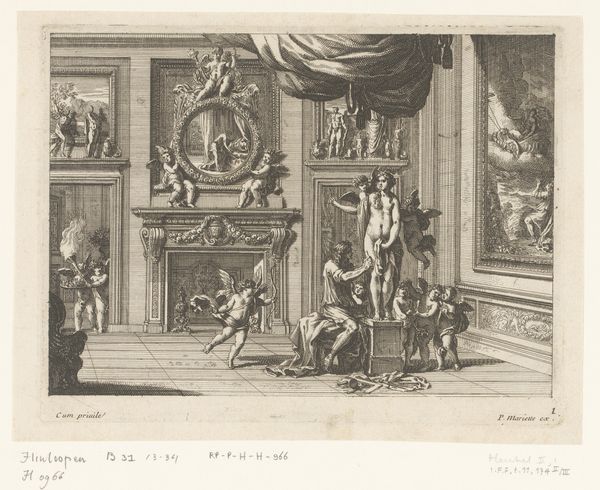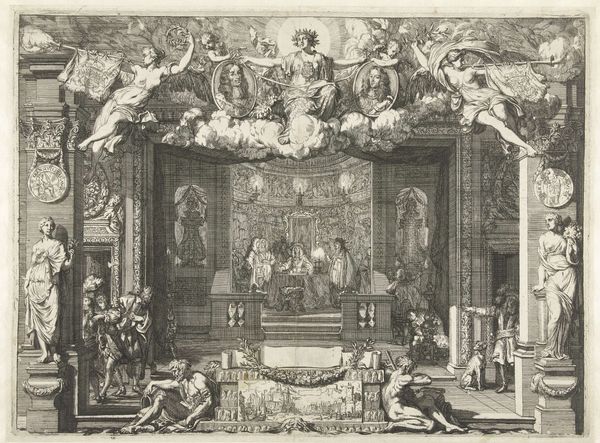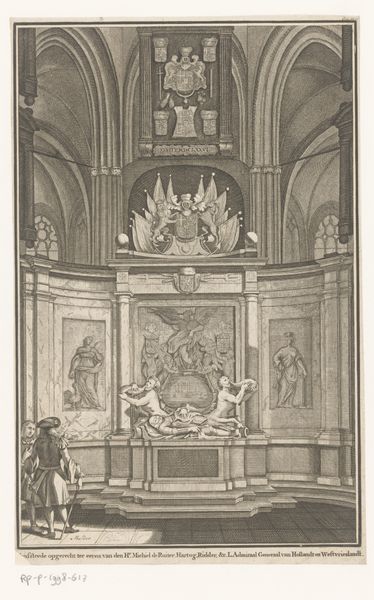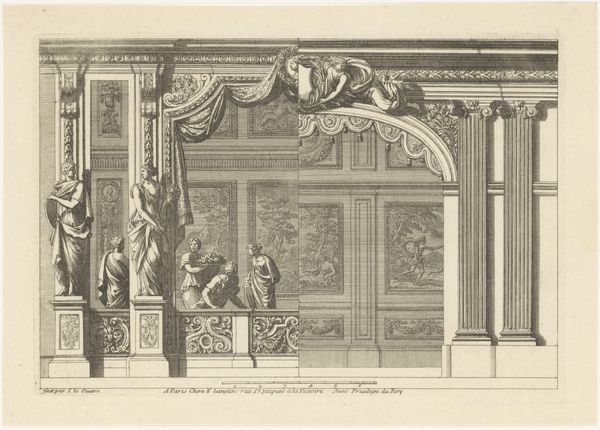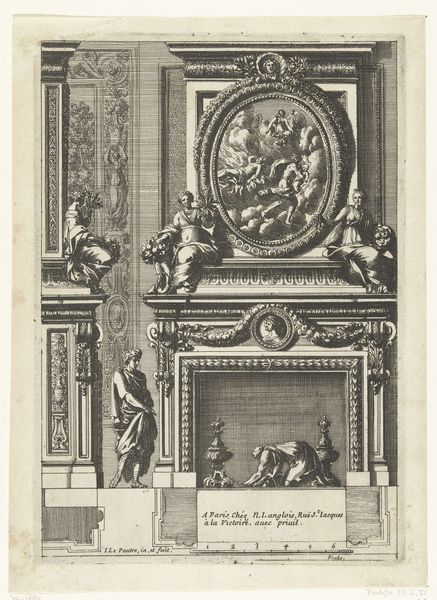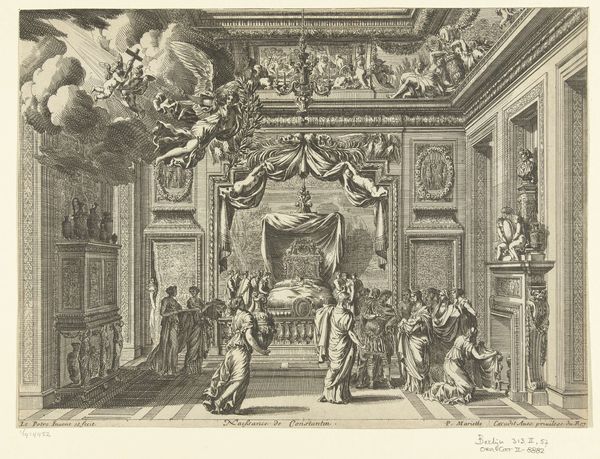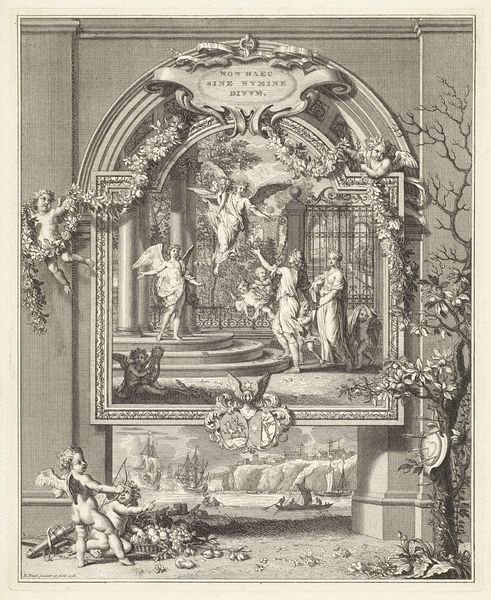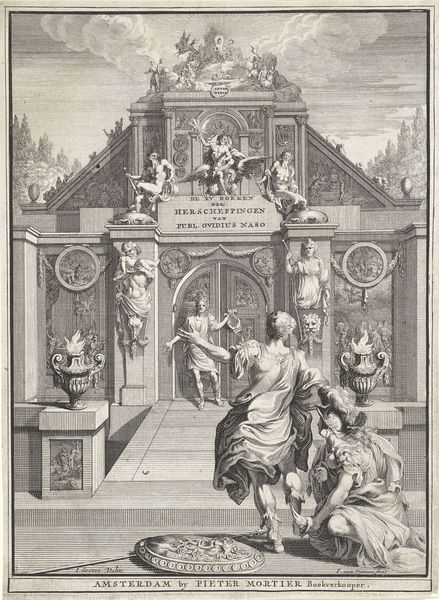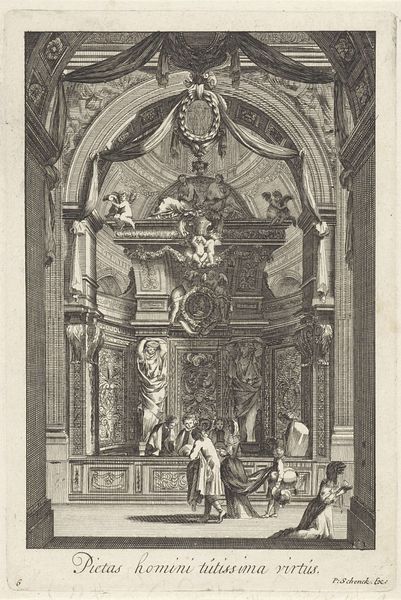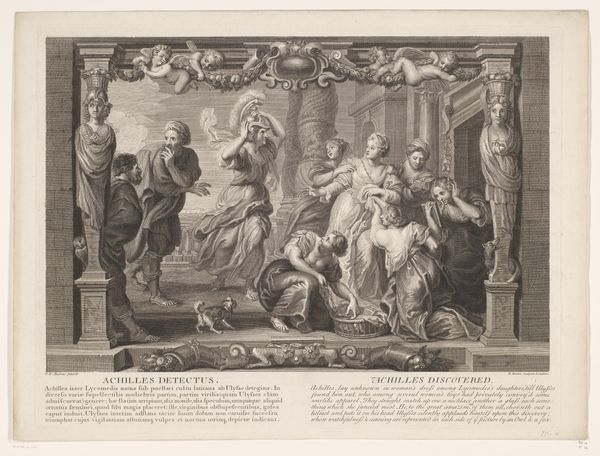
engraving, architecture
#
baroque
#
landscape
#
engraving
#
architecture
Dimensions: height 228 mm, width 308 mm
Copyright: Rijks Museum: Open Domain
Giovanni Francesco Venturini made this print of the Fountain of Venus at Villa d'Este in Tivoli in the late 17th century. It’s an etching, a printmaking process using acid to bite lines into a metal plate, which is then inked and pressed onto paper. The print shows the fountain's elaborate architectural setting. Water is the star here; spurting jets animate the sculpture of Venus. But it's the process of etching that gives the image its own distinctive character. Look closely, and you'll see a web of fine lines creating tone and texture. Etching allowed for relatively quick reproduction, making images like this widely available. Prints like this one also served as a kind of advertisement, allowing wider audiences to experience the wonders of Villa d’Este. By focusing on the material and the making, we can appreciate this print not just as a representation, but as an object of craft, commerce, and cultural exchange.
Comments
No comments
Be the first to comment and join the conversation on the ultimate creative platform.
